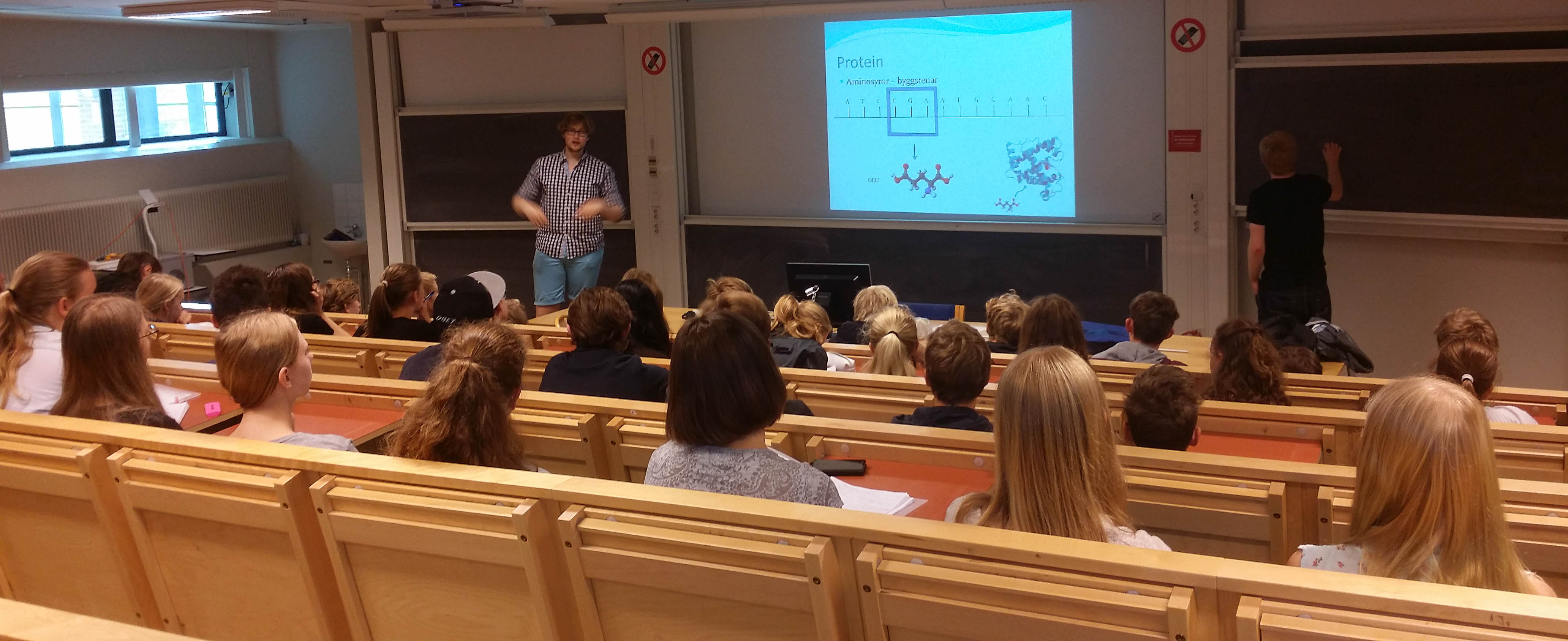Difference between revisions of "Team:Chalmers-Gothenburg/NextGeneration"
| Line 11: | Line 11: | ||
<p>In order to do so we held lectures and workshops for students in upper primary school, high school and first year university students. We gave them an insight into the principals of Cell Biology and we introduced them to what Biotechnology is, how it can be used and how it affects our everyday life. </p> | <p>In order to do so we held lectures and workshops for students in upper primary school, high school and first year university students. We gave them an insight into the principals of Cell Biology and we introduced them to what Biotechnology is, how it can be used and how it affects our everyday life. </p> | ||
| − | [[File:ChalmersGothenburgSommar.jpg| | + | [[File:ChalmersGothenburgSommar.jpg|620px]] |
<p>When we had captured their attention and made them hungry for more, we of course told them about the amazing iGEM competition, how it can create bridges between scientists and disciplines and how fun it can be. We also presented our project and how it is going to revolutionize the industry. </p> | <p>When we had captured their attention and made them hungry for more, we of course told them about the amazing iGEM competition, how it can create bridges between scientists and disciplines and how fun it can be. We also presented our project and how it is going to revolutionize the industry. </p> | ||
Revision as of 02:25, 19 September 2015


Next Generation
When discussing the public engagement aspect of synthetic biology, we realized that students would be an interesting demographic to present the subject to. We also liked the idea of inspiring young people, the next generation scientists and iGEM participants, to learn more about synthetic biology and iGEM. The focus lay not only on what synthetic biology is and how research in the field is carried out, but also on the potential products, outcomes, and implications for society of this work. It meant exploring personal and societal values and priorities as well as what concerns and misconceptions exist. To reach out to the students, we gave several lectures and workshops about synthetic biology both at Chalmers University and at schools in the Gothenburg region. In total we reached out to over 200 students at the age of 14 to 25. Another way we used to spread knowledge about biotechnology and synthetic biology was translating and extending Wikipedia articles to make information related to these topics easily accessible and understandable.
Lectures
Synthetic Biology is an extremely interesting field and as an iGEM Team we wanted to spread the word about it and hopefully inspire the younger generation of scientists to get more familiar with it.
In order to do so we held lectures and workshops for students in upper primary school, high school and first year university students. We gave them an insight into the principals of Cell Biology and we introduced them to what Biotechnology is, how it can be used and how it affects our everyday life.
When we had captured their attention and made them hungry for more, we of course told them about the amazing iGEM competition, how it can create bridges between scientists and disciplines and how fun it can be. We also presented our project and how it is going to revolutionize the industry.
When they had all the new information about Synthetic Biology we put them to the test with a quiz, where they had to become more active and guess whether some GMOs we presented were indeed existing or only made up by us. This lead to a short discussion on truths and misconceptions about Genetic Engineering.
The final part of the workshop consisted of the students using their creativity and their freshly acquired knowledge about Synthetic Biology to come up with new organisms to engineer in order to create amazing new products.
They seemed to highly enjoy the workshop, which we definitely did as well. We hope that it has inspired some of them to pursue a path in science and to become a part of the iGEM community.
Wikipedia Articles
There are many ways of spreading information about synthetic biology. Books, lectures, articles, videos and informative speeches are common but are often hard to come by for someone not involved in the subject. Albeit not extensively used in scientific research, Wikipedia is a great source of information for anyone interested in trying to learn basic information about a subject or to grasp a concept. It’s a site with lots of information about almost everything you can think of and is therefore often a go-to place for quick and easy knowledge. In its English version, most terms related to synthetic biology are covered, sometimes thoroughly and sometimes in just a few sentences. However in its Swedish version, many terms are very briefly described or simply absent.
Hence, we took it upon ourselves to try to expand the information about synthetic biology found in the Swedish version of Wikipedia by either building upon uncompleted entries or beginning from scratch on terms previously absent on the Swedish page.
We began by looking up terms closely related to our project but soon expanded to terms related to synthetic biology in general. The English version of the terms often acted as a template for our Swedish version, but the information was often compressed to be more user-friendly or freshly added if some content was lacking. The English versions were of course also edited and updated accordingly.
Since Wikipedia is highly used as a source of information, the addition of more content, mostly in Swedish but also in English will hopefully help boost knowledge and spread the word about synthetic biology. After we started working with different entries we have also informed other teams about our campaign which may lead to more articles being written and more information being spread.
